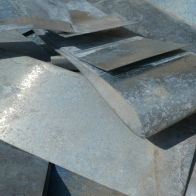Scrap Metal Price Index
Discover the latest trends in scrap metal prices with our specialized price index. Buying or selling metal scrap? This resource is tailored for industry professionals seeking context on the price movements of metals scrap such as Aluminum, Copper, Cables, Brass, Stainless Steel, and more. Our index equips you with the knowledge to anticipate market shifts and effectively plan your metal scrap operations in a sector known for its lack of transparency.
Maximize Your Profits with Scrap Metal Price Alerts!
Stay ahead of the market. Get notified when the price is right.
Scrap Metal Prices
updated on 7/8/2025
| Aluminum | €1,546.67 | +1.63% |
| Copper | €7,350.00 | +5.81% |
| Brass | €4,450.00 | +0.78% |
| Stainless Steel | €1,513.33 | -4.31% |
| Iron and Steel | €220.00 | -4.35% |
| Lead | €1,043.33 | +20.25% |
| Zinc | €1,400.00 | +2.19% |
| Tin | €14,195.00 | -8.68% |
About our scrap metal prices
These represent median prices for all materials from the respective metal category based on transactional values, which can vary in volume, geographic location, and quality. It’s important to understand that these are indicative trends, not actual metal scrap prices. Full-load transactions generally command higher prices due to increased handling and processing for partial-load transactions.
Frequently asked questions
What is this index?
The Metaloop Price Index is designed not to list actual sale prices, but to track the fluctuations and trends in scrap metal pricing. It serves as a critical tool for contextualizing price movements, helping you understand how scrap metal values shift over time relative to market forces and economic indicators in the industry.
How does Metaloop come up with these values?
The values in our index represent median prices for partial loads delivered to scrap yards, capturing a snapshot of market trends without specifying exact purchase prices. It's essential to recognize these figures as indicators of pricing trends, not definitive costs. Full-load transactions generally command higher prices due to increased handling and processing for partial-load transactions.
How does your pricing work?
The prices of secondary non-ferrous raw materials are closely connected to the market prices of industrial metals traded at the LME (London Metal Exchange). Depending on quantity, quality, and customers, prices are represented either as fixed prices or as formulas based on LME prices (price-fixation agreements).




























